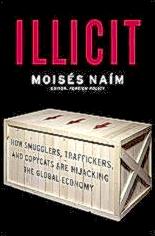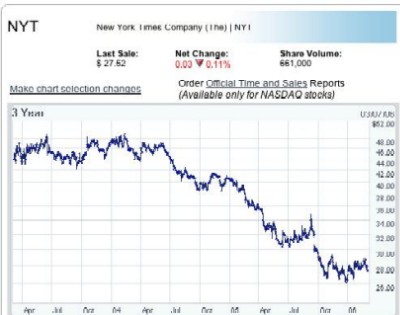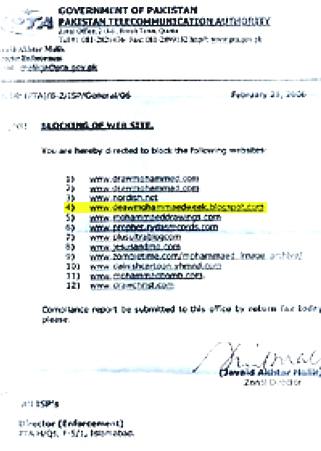
This post is about political correctness, about how it it confines its adherents and blinds them to reality. Eventually it erodes the integrity of those caught in its net.
The plague of political correctness is endemic in colleges and universities. The further up the academic food chain you go, the more the atmosphere is pervaded with cant and orthodoxy. Larry Summers, the now-former president of Harvard, is merely the most public example of an ex-communicant so offensive that no matter how much he apologized or how many re-education camps he instituted, his status as unshriven sinner could not be changed. His very being now inhabited a space beyond the pale.
In today’s academe there are many such unforgivable trespasses beyond Mr. Summer’s mortal sin of suggesting possible gender differences in spheres of learning. These transgressions most often occur along gender or racial lines, but they can be widened to cover any designated victim group. They are drawn in lines of black and white; there are no shades of grey and no ambiguity.
The theory and practice of victimology is now so widespread that it has become a lucrative career for its practitioners, “expert” consultants called in to “educate” the ignorant about the various kinds of harassment and misconduct of which they are either guilty or inherently inclined toward, or have been held captive by. The first time I saw that term – “victimology” – in reference to an academic paper, the bells began to toll for me: this was a perverse and dangerous mindset. It was then that I knew I was destined to stay as far away from the ivy halls and towers as possible.
Today’s universities are warrens of infighting and guild-thinking. Imitating the work ethic of, say, France or Germany, once tenured you may do as you wish. Ward Churchill is merely the currently most infamous of these charlatans. He could not exist in his present state in the real world, and make no mistake: academia, from kindergarten through graduate school is not the real world. It is France, only worse: tenured positions mean high salaries, job security, long vacations, sabbaticals, lucrative “consulting” work, and eager indentured servants in the form of graduate students acting as teaching assistants — all of which guarantee that the soft, cushioned existence of academic mandarins is far removed from anything resembling real life.
One of the tenets of correct academic thinking is that education is supposed to change some entrenched behavior or characterological predilections. Instead of providing intellectual knowledge and stimulation, it is the job of the academy to form a particular kind of thinking. Diversity exists in appearances – race and gender – but not in philosophy or varieties of critical thinking. There are victims and there are perpetrators, there are good guys and there are bad guys. The lines are clear.
In a politically correct environment there are many areas of non-free speech. In fact, the more a group of people extols a particular virtue, the more you can intuit the black holes of “what may not be spoken.” And one of the most troublesome no-go areas in college administrations (at least for public consumption) is the rate of alcoholism, of alcohol bingeing, and of groups of young people drowning in their own inebriation.
This does not mean being drunk cannot be mentioned; it means it cannot be aggressively addressed and stopped because its seriousness is too fearful to the administrators trying to attract money and support.
However, one has only to look around at the things you may not do as a college student that are permitted as a normal citizen to know that schools have the power to stop behavior that threatens them in some way. For example, dissident political voices have been most effectively squelched. Talk to a few college students and you find out they sing whatever the choir is singing and simply wait until they are away from school to freely speak their own minds. As they’ll tell you, speaking out is a good way to damage your grades and your academic future.
I know one group of students who have chosen to room together because they are all conservatives of some sort – though most of them would balk at such a designation. They want one small island in a Leftist Kingdom where they may speak freely without having a spittle-drenched “Bushitler” tirade directed at them.
As undergraduate life has become increasingly soaked in alcohol and students have become subject to the problems associated with frequent and severe inebriation, colleges have increased their emphasis on education – but not on education about the physical, legal, moral, or spiritual aspects of chronic or intermittent drunkenness. Instead, colleges narrowly focus on the after-effects. This makes it look as though they are doing something without actually accomplishing anything except spending more money on special “experts” they truck in to address “issues.”
As anyone who has experienced or witnessed the effects of inebriation can testify, the main symptom appears to be disinhibition. Apparently this is due to alcohol’s effect on the frontal lobe of the brain (a part of the brain that is undergoing rapid change during adolescence and early adulthood — thus the hard-wired tendency to impulsive behavior in this age group is exacerbated by alcohol).
Studies have shown that these effects are much more deleterious to women than to men. This is just another gender difference that can’t be mentioned within academia’s confines. Because of the differences between the way men and women metabolize alcohol, women, on average, get drunk – by the legal definition of inebriation – more quickly than men and on smaller amounts of alcohol. They also suffer more damage to their liver and other organs from frequent and chronic over-indulgence than do men (yes, it’s not fair but this a reality-based discussion). The current recommendation for adult women is that they limit alcohol consumption to several glasses of wine or ounces of spirits over the course of a week, in order to avoid organ damage.
One of the biggest failures of colleges is their inability to change or even openly address undergraduate behavior when it comes to alcohol consumption. As a result, they have students dying of alcohol toxicity, or sexual encounters which end either in character destruction, intense shame, or cries of rape, just to mention the most extreme examples. And this is aside from the property damage, lost productivity of students, and the drop-out rate due to substance abuse. One could also wonder if the suicide rate in colleges is at all connected to alcohol. How many kids go out of windows while drunk?
Which brings me finally to an actual incident which will serve as an example. As told to me by several students at the College of William and Mary, and adding what I was able to glean from the news media, this is what happened:
Beginning one evening last October, an evening which included long hours of drinking, several lives began a steep descent from which they will be years recovering… if ever. What happened is important, but what transpired after that night is even more important. The stance of the administrators of the College, the actions they took, the words they printed and said, are much more significant — and much more irresponsible than anything which occurred that night. If you have a child in college, this story ought to worry you. If you have a child at the College of William and Mary, it ought to alarm you mightily.
There are links to the newspaper accounts at the bottom of this post. These are the bare outlines. The students I talked to gave their versions of what they “think” happened. More importantly, I have their opinions of the administration’s response. The students have lost faith in the integrity of personnel at the school that they formerly admired. They had a ringside seat to what they perceived as CYA behavior all the way down the line. When I asked them if they were still happy they had chosen William and Mary, there was reluctant assent. “After all, how can you go back on a decision you made a couple of years ago when you thought this was a good place?” said one student. Another is deeply angry but doesn’t want the cost that would be involved in switching schools. Another wants to avoid girls at all costs. He thinks they aren’t trustworthy, based on this incident.
Last October 28th, a member of the College’s Board of Visitors hosted a party at his home for a sorority to which his daughter belonged. The drunken behavior of the guests was so out of control – girls were vomiting, glasses were broken, and some sorority members were unable to speak coherently – that after an hour the host shut down the party and sent the students back to the campus by bus. No, they didn’t get falling down drunk in an hour. In the research for this post, I learned a new term: “pre-gaming.” That means having a lot of booze before an event. This is a new term for old alcoholic behavior: one gets drunk before going out. Thus, these students “pre-gamed” the party and arrived having already consumed a large quantity of alcohol.
On October 30th, a senior at the College was charged with rape and arrested. He was accused of having raped one of the girls while they were at the party. He remained in jail until November 2nd, when he was released on $25,000.00 bond. Two months later, on January 4th, the Commonwealth’s Attorney for Charles City County (the legal jurisdiction of the above-mentioned party and the scene of the alleged crime) dropped the charges against the senior for lack of evidence. This man immediately filed a defamation suit for five million dollars against his accuser.
Meanwhile, however, he was tried in absentia at the College’s judicial proceedings, found guilty of sexual misconduct by the school, and forced to leave a semester before his graduation. He will be allowed to apply for re-admission after his accuser graduates in 2007.
What is even more bizarre is that a second student accused of rape by the same girl, though not charged by the Commonwealth’s Attorney with any crime, was also processed by the judicial branch of the College. He was cleared of charges by the College judicial system – but then he didn’t have state criminal proceedings to face so he was not at risk in appearing at the College to defend himself.
It gets crazier still: a third man stepped up to say that he had had a sexual liaison with the accuser after her alleged rape by the accused. This man was neither accused nor had charges brought against him, though the sorority sisters of this woman, the accuser, say she was definitely intoxicated when this particular act of sexual congress transpired. Sexual intercourse with an intoxicated woman is sufficient grounds to file charges of rape in Virginia. However, none were filed by either the college or the Commonwealth based on the man’s story or the sorority sisters’ claims that she was very drunk at the time of this third encounter that evening in October.
And it gets even worse. Remember that the accused had been jailed on October 29th and was not released on bond until November 4th. On November 2nd, when this senior was arraigned in court and remanded to jail until he could be bonded out, the Vice President of Student Affairs sent out an email to the whole College community, naming the accused student. Students, faculty, and staff were informed of the charges. The student’s name became instantly infamous across the campus.
Date: Wed, 2 Nov 2005 20:58:24 -0500
From: “Sam Sadler” wssadl@wm.edu
Subject: [students] A Message to the Community
To: students, faculty, staff
I regret to inform you that a William and Mary senior, [name redacted], was charged with rape on October 30, 2005, and arraigned today in Charles City County Court. Because the alleged incident occurred in Charles City County, it is under investigation by the Charles City County Sheriff’s Department. The victim was another student at the college.
On such an occasion, our first thoughts are for the alleged victim. As you would expect, we are doing all that we can to ensure that her immediate needs are being met and that she is given proper support.
It is important for everyone to remember that [name redacted] has only been charged with this crime. Everyone is innocent until proven guilty.
This is an occasion of extraordinary sadness for everyone involved. It is also a time of sadness for our entire community because I sincerely believe that what happens to one of us at William and Mary does affect us all.
Sam Sadler
That was his first email. On February 23, he sent a densely worded, three page email – this time only to the students – attempting to explain his behavior in having sent the first email, and trying (though in my estimate, sadly failing) to explain why the College could find a student guilty even when the Commonwealth had withdrawn their charges. The email is far too long to put in this post, but there is a link to it below.
A libertarian campus paper, The Remnant, invited Dr. Sadler to attend a forum on the issues raised by this affair:
The Remnant welcomes Mr. Sadler to defend the judicial system in a public forum. We have scheduled such a forum for March 20. Mr. Sadler, if you think this system is so fair, please come out from the cloak of school-wide emails you hide behind. Defend your position. We also embrace the opportunity to engage every administrator and student involved in the judicial process to do likewise. The students need answers to these questions, Mr. Sadler, and the College needs to answer to what it has done.
The Remnant’s request for Dr. Sadler’s presence is reasonable. At no time has the College dealt openly with the severe problem underlying everything: the whole mess was fueled and driven by alcohol, copious and extreme amounts of it.
Do you know what their focus is instead? You guessed it: rape. Rape is a big problem at the College of William and Mary. There have been four reported rapes this year at the college – in all four cases the parties already knew one another. I’d bet next month’s grocery money that in each case lots of alcohol consumption preceded these incidents. There was also one real sexual assault: the apartment of a student who lived off-campus was broken into and she was raped by a man wielding a knife. That was, without any doubt at all, a horrible crime.
But those other four “rapes”? Sorry, folks, but what we have here is not a sexual assault problem. We do have a stuck-on-stupid deliberate blindness to the real problem.
And why is that, you say? Because the College reacted to the consequences of drunk and disorderly behavior by choosing victims to defend instead of holding all parties responsible for their licentiousness. No matter how you cut it, sex with three men in one evening is evidence of a deeply troubled woman. If she was intoxicated, as some claim, then she needs help with alcohol counseling or AA. If she was sober, she needs intensive therapy to address behavior that is either deeply compulsive or extraordinarily impulsive. We can see the behavior in someone so young and be alarmed for her safety and judgment. Once outside the realm of college life, she could be in mortal danger.
Let me give you an example: remember the recent case of the graduate student in New York City who was brutally raped and murdered? This is a terrible tragedy; a life cut short and a family left to mourn a young woman who had so much to live for. But this woman did two dangerous things: she got very drunk and she “closed the bar”, that is she stayed beyond closing time rather than have the bartender call a cab well before closing so she could leave safely. Impaired judgment means poor decisions. We cannot know if this young woman was accustomed to getting drunk while an undergraduate, but if she was she probably did so in a fairly safe environment. New York City bars at closing time are not safe places for a single woman who has had enough alcohol to impair her judgment.
Note: THIS IS NOT BLAME. She did not in any way “deserve” what happened to her. This is reality. Don’t go swimming without a buddy, and don’t go drinking without several of them. Especially if you are female and in a large city.
But the College is not preparing its young women for the real world. Or if they are, it is certainly under wraps – while accusations against its men leave them bitter, confused and also unprepared to assume integrated relationships on leaving school. In response to this sad affair, William and Mary has asked students to “help think of creative ways to decrease sexual assault.”
That’s right: we will have peer assessments and suggestions, not moral leadership by the administration. Any competent business CEO – and college presidents are essentially CEOs and are paid accordingly – would be contemptuous of an organization that wanted customers to find solutions to their problems. And don’t forget, at $11,000.00 a year, students are customers.
So far these executives have come up with slogans and correct thinking. They have created programs such as “One in Four” and “Every Two Minutes” to address the mess. Somehow I intuit that these are purported rape statistics: say, one in four women is sexually assaulted or that every two minutes some woman is being raped. Something like that. Victim talk, victim slogans, victim thinking… I could be wrong: perhaps “One in Four” really means one alcoholic beverage for every four hours at a party. Somehow I doubt it, though. How do you make a victim out of that?
And the community has stepped in to help by providing a plethora of sexual assault awareness and self-defense training. Even the Williamsburg Presbyterian Church is offering a series of free Rape Aggression Defense (RAD) classes through the semester.
The politicians can’t be left out either: the local delegate to the State Assembly has proposed House Bill 910, which would “prevent anyone charged with rape from attending or working at state schools.” Notice that his bill does not say “found guilty”; now one has only to be charged to be ineligible for state schooling. This is obviously political grandstanding since it is obscenely unconstitutional. The school is merely blind, the politician is either ignorant of constitutional law or grandstanding… or both.
So there you have it: a drunken party with lots of witnesses to testify to lewd behavior, a lot – oh, dear Lord what profuse amounts – of bloviation by those in charge. Meanwhile, student drinking continues, non-stop. When – not “if”, but “when” – a drunken sexual encounter ends badly, another tick will go down in the sexual assault column. Nothing about the blood alcohol levels of those involved, that is unless the girl immediately files sexual assault charges and is found to be incompetent to actually provide consent for sexual congress due to inebriation. Doesn’t matter how drunk the boy is, or how impaired his judgment. If you’re female, you’re the victim; if you’re male, you’re wrong. If you’re a college administrator, you start another group for “victims.”
If you’re a college administrator the one thing you never, ever do is publicly mention the elephant on the campus. The big gray one staggering across the campus holding a beer in his trunk.
* * * * * * * * * * * * * * *
Links used for this post:
Dr. Sadler’s email, 11/2/2005
“W&M to propose programs to deal with sexual assault”, The Virginian-Pilot, 1/20/2006
“First Rape Case Thrown Out of Court”, Dog Street Journal, 1/20/2006
“Charges dropped against student”, The Flat Hat, 1/20/2006
“W&M student renews rape allegation”, Richmond Times-Dispatch, 1/28/2006
“Rape Case Blown Open”, The Remnant, 2/14/2006
Dr. Sadler’s email, 2/23/2006
The Remnant Responds to Dr. Sadler’s email, 2/24/2006
“Subpoena of College judicial records quashed”, Virginia Informer, 3/13/2006
National Institute on Alcohol Abuse and Alcoholism; No. 46
 Mr. Robb’s second point details how the symbiosis fuels terrorism. For example, he says that Al Qaeda’s attack on Madrid was funded by the sale of Ecstasy. He quotes Moises Naim’s book Illicit to explain how globalization has fostered a huge network of criminal endeavor with a “technologically leveraged global supply chain” similar to Walmart (just another example of how the far Left is in the right book, on the wrong page — ed)
Mr. Robb’s second point details how the symbiosis fuels terrorism. For example, he says that Al Qaeda’s attack on Madrid was funded by the sale of Ecstasy. He quotes Moises Naim’s book Illicit to explain how globalization has fostered a huge network of criminal endeavor with a “technologically leveraged global supply chain” similar to Walmart (just another example of how the far Left is in the right book, on the wrong page — ed)



 When you imagine Trinidad, do you picture lush tropical vegetation and pristine beaches, or do you think about beheading by cutlass?
When you imagine Trinidad, do you picture lush tropical vegetation and pristine beaches, or do you think about beheading by cutlass? The picture makes former Governor Warner look like he’s laid out in his coffin. In what is reminiscent of Rathergate’s memo, this Warnergate photo has the experts arguing about whether this ghoulish shot of the Guv is deliberate or simply a technical mistake. Be sure to read
The picture makes former Governor Warner look like he’s laid out in his coffin. In what is reminiscent of Rathergate’s memo, this Warnergate photo has the experts arguing about whether this ghoulish shot of the Guv is deliberate or simply a technical mistake. Be sure to read









 Gates of Vienna placed first for
Gates of Vienna placed first for  The squeaky wheels have gotten the grease.
The squeaky wheels have gotten the grease.